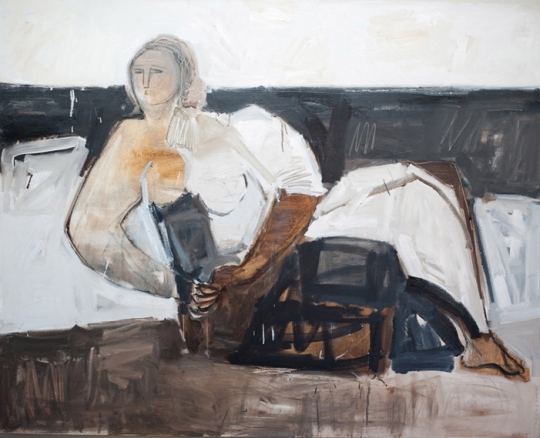JULY 9, 2015 BY http://www.mutantspace.com/
Sylvia McEwan‘s paintings draw on classicism and modernism, her pictures, in particular her figurative paintings, heavily influenced by Willem De Kooning’s figurative work, the San Francisco Bay figurative artists such as Richard Diebenkorn and the late 19th and early 20th Century masters such as Cezanne, Picasso and Matisse.
While McEwan’s paintings focus on the human figure she is more concerned with space, form and structure, always looking to find the perfect balance, to create an image that enlightens and emboldens us, resonates with our sense of humanity. This search for perfection is what keeps her moving forward, each picture a step towards the perfect painting that can never be made, is impossible to achieve, yet is an adventure in paint and mark making that bears beautiful pictures that sing and lift the ordinary into the extraordinary.
These paintings are a reminder that the great masters of the past still have relevance, still inspire contemporary artists, their work timeless, their search for beauty in a line, a colour, a brushstroke, endlessly fascinating and never dull. And while these pictures of women bathing, talking, reclining on furniture have been seen before they have a freshness, a vitality and life all of their own. McEwan is all too aware of the subject matters lineage and cognisant of her influences yet she is steadfast in her desire to push outwards, to find a language that can only be defined by her own concerns and love of making. Of creating pictures that delight and enthuse. Her work reminds us that painting as a discipline will never die despite the harbingers of doom who believe we are at the end of art history. Time, process and craft is ageless and will always appreciated. Here’s what she has to say about her work:
My work shifts between the figurative and the abstract. Although it evolves from the representational and moves through to the abstract, my work retains the influences and inspirations from which they were conceived. Whilst the subject matter is important, the true subject is always; space, form, structure and balance.
